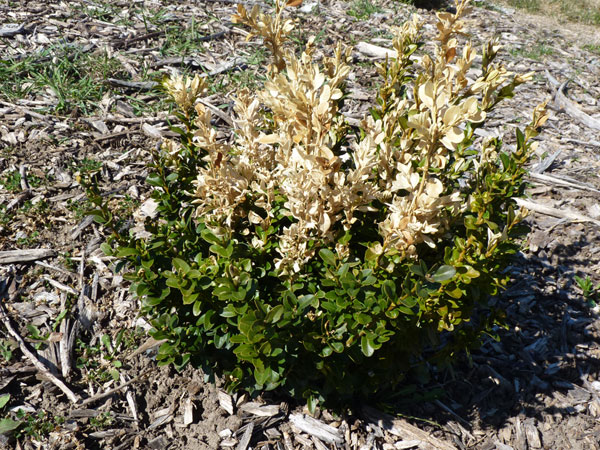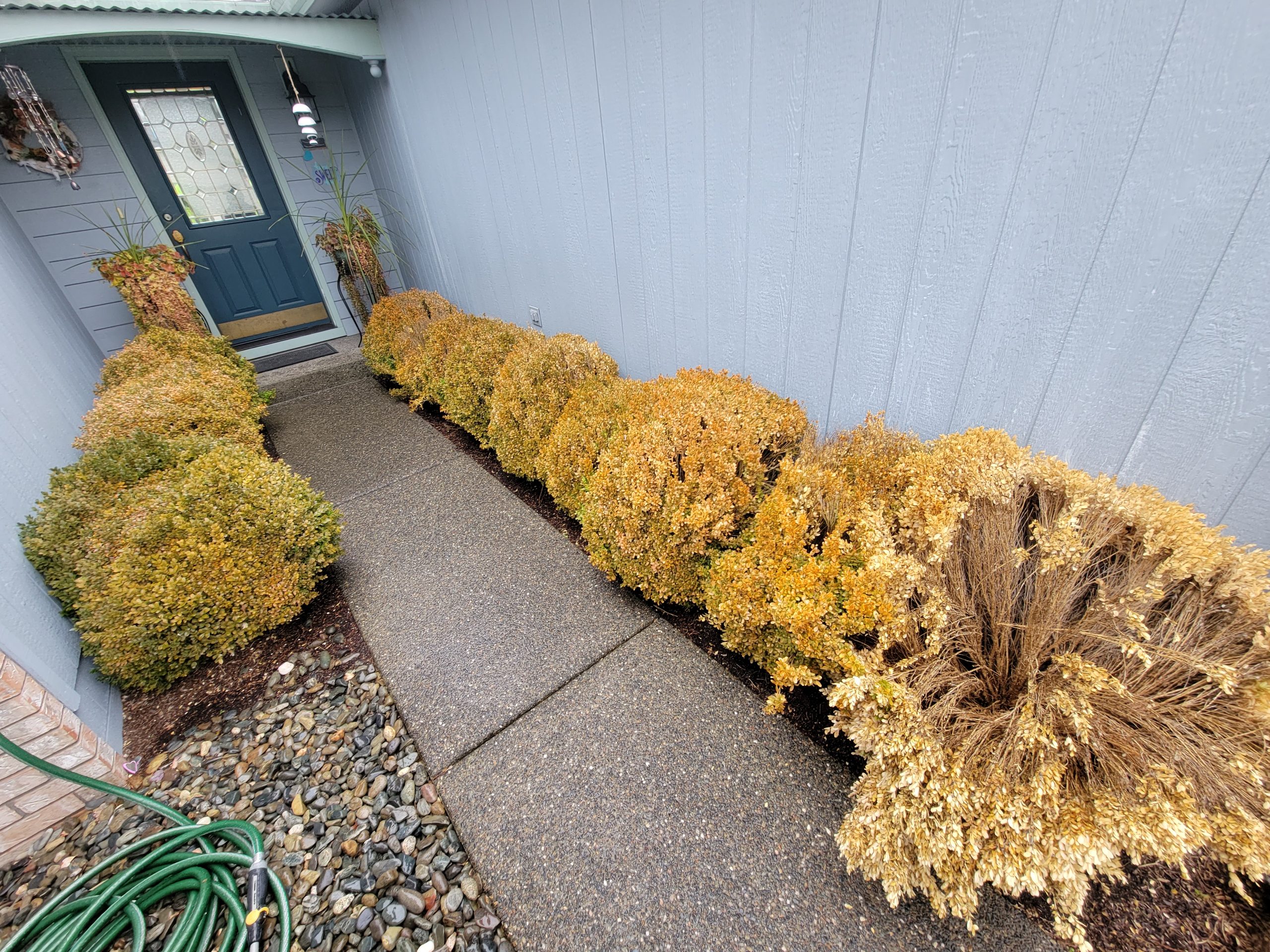To determine if your boxwood is dead, check for any signs of new growth or green leaves. If there are no signs of life, it is likely that the boxwood is dead.
Boxwoods are popular shrubs known for their dense, evergreen foliage. However, like any plant, they can suffer from various issues that may cause them to die. Factors such as extreme weather conditions, diseases, insect infestations, or improper care can lead to the death of a boxwood.
It’s important to promptly identify whether your boxwood is dead so you can take the necessary steps to remove it and potentially replace it with a healthy shrub. We will explore how to tell if your boxwood is dead and discuss possible reasons for its demise.

Credit: apps.extension.umn.edu
How to Tell If My Boxwood is Dead: Step by Step Guide
Signs Of A Dead Boxwood
Wilting Leaves: Wilting leaves are one of the common signs that your boxwood may be dead. When boxwood leaves start to wilt, it is essential to determine whether it’s normal wilting or a sign of a dead boxwood. Normal wilting occurs when the leaves lose water due to hot weather or lack of moisture. However, if the wilting leaves are completely shriveled and dry, it may indicate that the boxwood is dead.
Discolored Foliage: Another indication of a dead boxwood is discolored foliage. If you notice yellow, brown, or black spots on the leaves, it might be a sign that the boxwood is dying or already dead. A healthy boxwood typically has vibrant green foliage, so any discoloration is cause for concern.
Brittle Branches: Brittle branches are a clear signal that your boxwood may be dead. Healthy boxwoods have flexible branches that can easily bend without breaking. However, if the branches snap or break easily, it is likely that your boxwood is dead. To test the flexibility of the branches, gently bend them to see if they show any signs of life.
Factors Influencing Boxwood Health
Environmental factors play a crucial role in the health of boxwood plants. Climate, sunlight, and water are essential for their well-being. Boxwoods thrive in moderate climates, with temperatures not exceeding extreme highs or lows. Proper water drainage and sufficient sunlight exposure are crucial in preventing rot and promoting healthy growth.
Pests and diseases are common threats to boxwoods. Pests like boxwood leaf miners and boxwood mites can cause damage to the plant’s leaves, weaken its overall structure, and eventually lead to death. Diseases such as boxwood blight and root rot can also affect boxwoods negatively, compromising their health and vitality.
Improper care practices can have detrimental effects on boxwood health. Over or under-watering, inadequate pruning, and insufficient soil nutrition are common mistakes that can weaken the plant and make it susceptible to diseases and pests. It is important to regularly monitor and maintain boxwoods to ensure their long-term health.
Understanding the environmental stressors, pests, diseases, and proper care practices is crucial in assessing the health of boxwood plants. Regular inspection, timely action, and appropriate care can help determine whether a boxwood is dead and, if not, what measures can be taken to revive it.
Steps To Revive Or Replace A Boxwood
To determine the health of your boxwood, it is essential to use specific techniques to assess its condition. Begin by examining the foliage – if it appears dry, brittle, or has turned brown, it could be a sign of plant death. Check the branches for flexibility: if they snap easily, it may indicate the plant’s demise. Additionally, perform a scratch test by gently scraping the bark – if the underlying tissue is brown or black, it suggests the boxwood is dead.
If your boxwood shows signs of life, you may be able to nurse it back to health. Pruning is crucial to remove dead or diseased branches, allowing new growth to emerge. Providing proper care such as regular watering, fertilizing, and ensuring adequate sunlight is essential for revival. Moreover, consider applying a fungicide to combat any fungal infections that may be impairing your boxwood’s recovery.
If your boxwood is beyond saving, it’s best to remove and replace it. Start by carefully uprooting the dead plant, ensuring you remove all root material. In addition, select a new boxwood variety that is well-suited to your climate and soil conditions. When planting the new boxwood, prepare the soil correctly and provide sufficient water and care to promote healthy growth. Furthermore, consider adding organic matter to improve the soil’s fertility and drainage.
Frequently Asked Questions Of How To Tell If My Boxwood Is Dead
How Do I Check If My Boxwood Is Dead?
To check if your boxwood is dead, start by scratching the stems. If they are green underneath, it means the plant is still alive. Another way to check is by performing a bend test on the branches. If they snap easily without any resistance, the boxwood may be dead.
What Causes Boxwood To Die?
Boxwood can die due to various reasons, including root rot, improper watering, pest infestation, extreme weather conditions, and lack of sunlight. It is important to assess these factors and provide the necessary care to prevent the plant from dying.
Can A Dead Boxwood Come Back To Life?
In some cases, a seemingly dead boxwood can revive if the roots are still alive. To encourage growth, trim back any dead branches, provide proper watering and fertilization, and ensure sufficient sunlight. However, if the roots are completely dried out, the chances of revival are slim.
Conclusion
Identifying a dead boxwood can be done by conducting a series of simple checks. Inspect the branches for signs of life or lack thereof, such as brittle or brown foliage. Observe the trunk and roots for discoloration or decay. Remember to water and provide proper care to maintain the health of your boxwood to prevent it from dying in the first place.
By being attentive and proactive, you can ensure the longevity of your boxwood plants.

